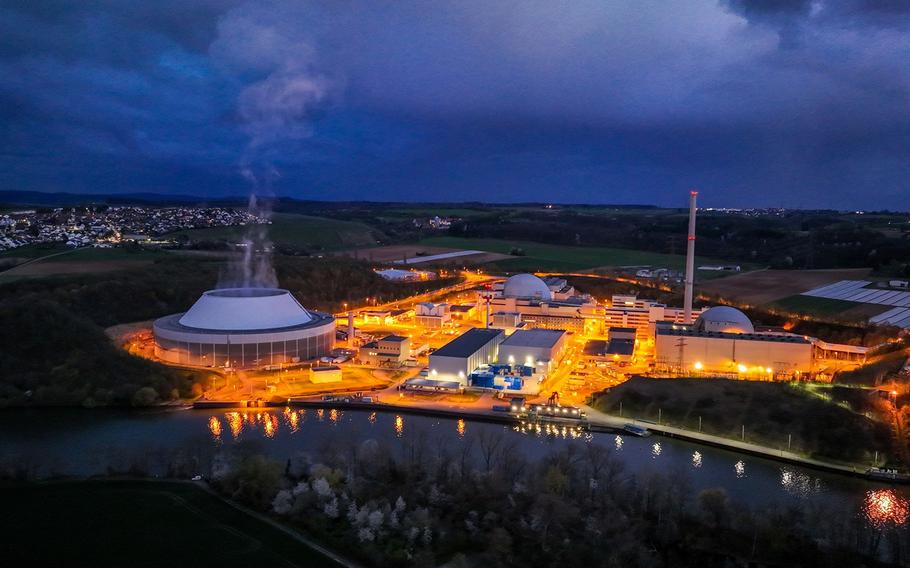
A nuclear power station in Germany. (Alex Kraus/Bloomberg)
Nuclear-energy officials arrived in Brussels this week amid a growing wave of public support for atomic power. They left humbled by the tepid reaction of bankers assessing the price tag of their ambitions.
The International Atomic Energy Agency convened a summit to build momentum for a low-emissions technology that many expect will be critical for hitting climate targets. A group of mostly Western countries pledged to triple nuclear generation by 2050. But lenders balked at the eyewatering cost of doing so.
“If the bankers are uniformly pessimistic, it’s a self-fulfilling prophecy,” former US Energy Secretary Ernest Moniz said Thursday after listening to a panel of international lenders explain why they’re unwilling to provide the $5 trillion the industry needs by mid-century.
“The bankers are calling for a proven business case,” said Jozef Sikela, the Czech Republic’s industry and trade minister. “We need to find a way to make it predictable, stable, bankable and affordable.”
Projects in Western economies have been plagued by construction delays and ballooning costs in recent decades. The newest reactor in the European Union - Olkiluoto 3 in Finland - started generating power last year, more than a decade late and three times over budget. Similarly in the US, Southern Co.’s Vogtle facility came in seven years behind schedule and $16 billion over estimates.
“The project risks, as we have seen in reality, seem to be very high,” said European Investment Bank Vice President Thomas Ostros. While the world’s biggest multilateral lender won’t close the door on nuclear, it recommends that countries needing power quickly focus on renewables and energy efficiency, he said.
China and Russia are building the most reactors. But their state-owned model of development is at odds with the European and US emphasis on private capital. That will likely need to change if Western economies want to maintain nuclear’s market share.
“We need state involvement, I don’t see any other model,” Ostros said. “Probably we need quite heavy state involvement to make projects bankable.”
Ines Rocha, a director at the European Bank of Reconstruction and Development, and Fernando Cubillos, a banker at the Development Bank of Latin America, also said their lending priorities lean toward renewables and transmission grids. “Nuclear comes last,” Cubillos said.
Potential new investors could include sovereign wealth funds or philanthropists, according to Charles Oppenheimer, who advocates for nuclear energy at The Oppenheimer Project.
“If it’s a safe and secure investment with a predictable return, there’s a huge amount of capital,” said the grandson of J. Robert Oppenheimer, the US physicist who ran the Manhattan Project. “What is lacking generally is capital for that risky build.”
Europe and the US have been trying to engineer nuclear out of its malaise, proposing a new generation of smaller reactors that can be factory-made and assembled on-site. Theoretically, that approach could cut costs, but has yet to be proven.
In the meantime, with global temperatures soaring and international climate targets in peril, some nuclear advocates say the focus on such innovations may be misguided.
“We’ve heard a lot about a leapfrogging to the next generation of nuclear technologies,” Moniz said. “I would submit it might just be better to focus on getting some technologies deployed right now.”
With assistance from John Ainger.